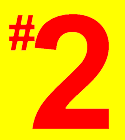Key Question #2: What creative techniques are used to attract my attention?
|
|
Core Concept #2: Media messages are constructed using a creative language with its own rules.
Keyword: Format
The second Key Question explores the 'format' of a media message and examines the way a message is constructed, the creative components that are used in putting it together -- words, music, color, movement, camera angle and many more. The goal of Key Question #2 is to help students build an internal checklist that they can apply to any media message anytime.
To build this checklist, we have to, first, begin to notice how a message is constructed. Through the activities in this unit, students will grow in understanding how all forms of communication -- whether magazine covers, advertisements or horror movies - depend on a kind of "creative language": use of color creates different feelings, camera close-ups convey intimacy, scary music heightens fear.
"What do you notice. . .?" is one of the most important questions to ask in the media literacy classroom. And, of course, all answers are acceptable because different people notice different things. (More about this in Key Question #3.)
Because so much of today's communications, including the news, comes to us visually, it is critical that students learn the basics of visual communication -- lighting, composition, camera angle, editing, use of props, body language, symbols, etc. -- and how the use of these techniques influences the various meanings we can take away from a message. Understanding the grammar, syntax and metaphor system of media, especially visual language, not only helps us to be less susceptible to manipulation but also increases our appreciation and enjoyment of media as a constructed "text."
Just as writing improves not only one's reading skill but also one's appreciation for good writing, the best way to understand how media are put together is to do just that -- make a public service announcement, create a website, develop an marketing campaign for a school activity. The more real world the project is, the better. Digital cameras and computer authoring programs provide easy ways to integrate creative production projects in the classroom, from writing and illustrating their own stories in kindergarten to creating a personal video documentary in the upper grades.
The four major arts disciplines -- music, dance, theatre and the visual arts -- can also provide a context through which one gains skills of analysis, interpretation and appreciation along with opportunities to practice self-expression and creative production.
Guiding Questions:
- What do you notice… about the way the message is constructed? Colors? Shapes? Size? Sounds, Words? Silence? Props, sets, clothing? Movement? Composition? Lighting?
- Where is the camera? What is the viewpoint?
- How is the story told visually? What are people doing
- Are there any symbols? Visual metaphors?
- What's the emotional appeal? Persuasive devices used?
- What makes it seem "real?"



